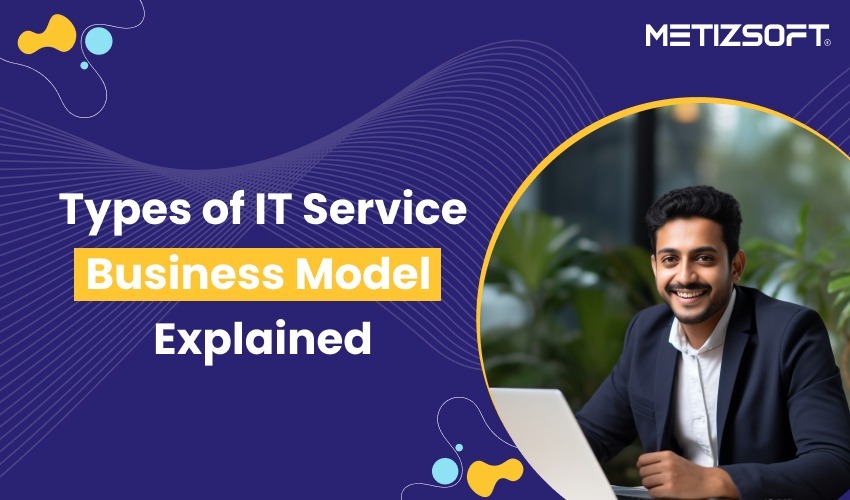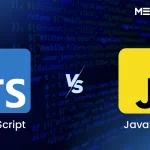
Identifying and choosing a suitable business model is daunting in a rapidly evolving IT service landscape. However, opting for the right one is essential, as it significantly transforms your vision into life.
You have the luxury to go solo on your project development journey, as you have direct access to advanced tools, tech stacks, and freelancing options.
But, in a competitive business world, no one wishes to take risks where they can enable a flexible and result-driven business model on will.
This article examines the various IT service business models. It equips you with the practical knowledge to understand and choose the suitable model for your venture into the IT service realm.
Table of Contents
What is a Business Model?
A business model serves as a conceptual framework that describes how a company creates and delivers value to its customers. Additionally, it outlines how the company receives compensation for its offerings. The components of a business model include:
- The specific product or service being offered.
- The identified target customers and market.
- The company’s position within the overall value chain.
- The economic drivers enable the company to achieve its profitability and growth objectives.
A business model is an organized roadmap that instills order and discipline into the dynamic process of creating, expanding, and running a business.
Business models play a pivotal role in the growth and sustainability of IT service businesses. Startups use them to define their value proposition and revenue streams.
Established companies leverage them to plan, develop, and guide their innovation processes. This strategic use of business models ensures sustainable long-term growth in the dynamic IT industry.
Different Types of IT Service Business Model
The world of IT services offers a variety of business models to cater to different project needs. One who understands these options empowers businesses to choose the suitable model for efficient project execution and success.
Here’s a breakdown of different IT service business models for your knowledge and consideration:
Dedicated Business Model
The dedicated business model encompasses a crack IT team of professionals who are laser-focused on your project and work seamlessly as an extension of your company.
It’s a perfect fit for businesses that need a high level of customization, ongoing support, and a team that truly understands their unique goals.
Your Private Squad: A service provider assembles a team of experts tailored to your needs. Developers, designers, project managers – the whole crew is dedicated solely to you, not juggling multiple clients.
Focus and Efficiency: With a dedicated team, everyone becomes deeply invested in your project’s success. This focused approach leads to faster development, smoother communication, and a higher-quality end product.
Scalability on Demand: The dedicated model allows you to easily adjust your team’s size and skillset as project requirements evolve.
Cost-Effectiveness: While you might think a dedicated team sounds expensive, it can be quite cost-efficient. You avoid the overhead of in-house recruitment and management and often benefit from the provider’s access to a broader talent pool.
Fixed Cost Business Model
The Fixed Cost Business Model establishes a predetermined price for a defined project scope and deliverables. This model is best for projects like creating a toy with clear instructions.
The needed parts (project scope) and how long it will take to build (the timeline) are clearly defined. This model is an excellent choice if a project has a clearly outlined plan.
Planning: Knowing your IT cost allows for better financial planning and budgeting. Plus, you can focus on core business activities without worrying about fluctuating IT expenses.
Scalability with Structure: The fixed-cost model allows for pre-arranged adjustments within the agreed-upon scope. For example, if you need extra hours of support for a specific project, your plan might cover that.
Clear Communication: Setting clear expectations upfront is key in the fixed cost model. This fosters open communication between you and the service provider, ensuring everyone’s on the same page.
Time-and-Material Business Model
The time and material (T&M) business model is a billing system in which the client pays for the time spent working on a project and the materials used.
This business model offers a flexible and transparent way to manage projects. However, good communication and project management practices are essential to avoid cost overruns.
Billing based on effort: Almost all IT firms offer a transparent and fair billing process. In contrast, clients are billed based on the hourly rates of the professionals involved in the project. For example, developers’ and consultants’ prices are multiplied by the time they spend working on it. Material costs are added on top of that.
Flexibility: This model is ideal for projects where the scope is uncertain or likely to change. Since billing reflects the work done, clients only pay for what they get. It allows them to make required adjustments and pivots throughout the project.
Transparency: Clients have clear visibility into the project’s progress and costs. It’s because they receive regular updates on time spent and materials used.
Shared risk and reward: Since the final cost is unknown upfront, there’s an element of shared risk and reward. If the project takes less time than anticipated, the client pays less. Conversely, if it takes longer, the costs will be higher.
Select the Right Business Model for Your Business
In IT services, choosing a suitable business model is like selecting the perfect tool for the job. Several factors, such as the project’s plan, budget constraints, deadlines, and inherent nature, play a crucial role in this decision.
The dedicated business model offers firm control and flexibility, ideal for long-term projects, whereas the fixed-cost business model provides financial stability for projects with clearly defined requirements.
But what if the project’s requirements are constantly changing and evolving? This is where the Time and material Business Model shines, offering flexibility in environments where the project’s scope constantly changes and adapts.
By grasping the intricacies of these models, their strengths, and the scenarios where they truly shine, you’ll be well-equipped to select the most fitting approach for your specific IT service needs.
Contact Metizsoft a renowned web development company with a flexible IT model. Our dedicated team will run an end-to-end analysis of your project and pave the way to enable a result-driven IT model that fits your business model!
AboutChetan Sheladiya
Related Posts
Top 10 Agile Project Management Tools and Software in 2022
To all the project coordinators and managers out there, we know how challenging it is for you to streamline the project...
What is The Importance of On-Demand Taxi Booking Apps & How Much Does it Cost to Develop?
The development of the cab booking industry is rapidly growing, and its service has become essential across many countries....

